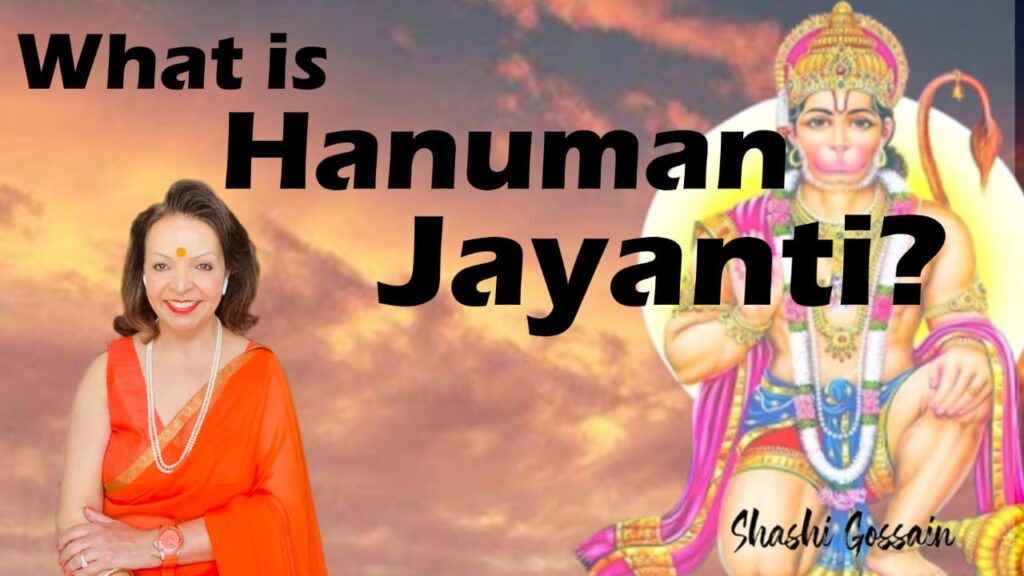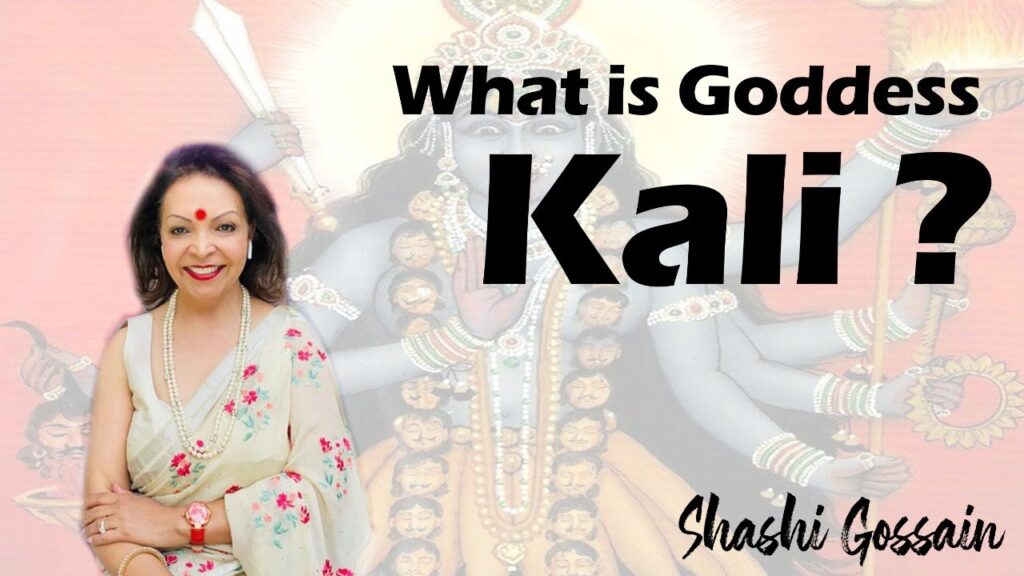Hanuman Jayanti
India is a land of festivals & Santana dharma, or Hinduism dates back more than 5,000 years. Ramayan and Mahabharat, the two main Hindu sacred writings, tell us stories about ancient India. From Vedas to Puranas, our beliefs have been based on their various versions found across India. Although Hinduism only believes in one God, The Brahman, deities were created in order to focus our concentration and stories evolved to demonstrate a way of life, very much like the Old Testament of the Bible.
Hanuman Jayanti 2021- 27 April 2021
What is Hanuman Jayanti?
One of the biggest festivities throughout India is that of the birth of Lord Hanuman, and the day is called Hanuman Jayanti. It is observed twice every year, as people in south India celebrate on a different date to those in North India. He was born on a full moon day of Tuesday, and this day of the week is in Hindi is called Mangalvar, meaning, a day of auspiciousness. Special prayers are carried out on Tuesdays in temples throughout India in his name. Even Hindus, who normally eat non-vegetarian food, refrain from eating meat on Tuesdays.
Who was Hanuman?
Hanuman is a Hindu god and divine vanara companion of Lord Rama. He is worshipped as a deity with the ability to attain victory against evil and provide protection. He is the symbol of strength, devotion and energy. He epitomises selfless service and devotion. He is the granter of happiness & destroyer of sorrows. He is said to be able to assume any form at will, wield the gada, a celestial weapons, move mountains, dart through the air, seize the clouds, and had a swiftness of flight. He is the patron god of martial arts such as wrestling and acrobatics, as well as activities such as meditation and scholarship. Hanumanji was positioned as a symbol of nationalism and resistance to persecution, during Islamic rule, as he is synonymous with strength, heroic initiative and assertive excellence. On this auspicious day, devotees of Lord Hanuman celebrate him and seek his protection and blessings.
Why do we worship Lord Hanuman?
Hanuman is worshipped for his unyielding devotion to Lord Rama and is remembered for his selfless dedication to the God. Hanuman is considered the living embodiment of the Karma Yogi (one whose meditation and devotion are demonstrated through hard work or service). Hanuman said “I am a humble messenger of Sri Rama. I have come here to serve Rama, to do His work. By the command of Lord Rama, I have come here. I am fearless by the Grace of Lord Rama. I am not afraid of death. I welcome it if it comes while serving Lord Rama.” In return for his unconditional love, Lord Rama granted him everlasting life. He promised that he would be worshipped alongside Rama and that his idol would be placed next to his.
How is Hanuman jayanti celebrated?
It is celebrated with immense devotion by Hindus throughout India. Many devotees on this day follow the ritual of bathing Lord Hanuman’s idol with water from the holy Ganga River. This is followed by lighting of the dhoop batti and praying to the lord. After this, red colour or sindoor is applied on the statue, red flowers, laddoos etc are offered. In the end, aarti of the Lord is done, followed by recitation of Hanuman Chalisa, a set of prayers describing & glorifying Hanuman. These are powerful texts, and the continuous reciting of this is believed to overcome all sorrows. Some also read the sacred Ramayana, as Hanuman also played a crucial role in the battle between Rama and Ravana in the epic of Ramayana or Shrimad Bhagavad Gita, which teaches us how to be Karma yogi. They will fast from sunrise, with only water during the day, with one light meal in the evening. They will go to the Hanuman temple, which is decorated with fresh marigolds and listen to spiritual discourses, which start at dawn. Many people also apply sindoor all over their body to seek blessings from the lord on this day. In parts of India, there are streets processions, where people dance, carry idols of Lord Hanuman and some people wear masks and tails to imitate the God. It is also said that anybody who worships Hanuman would be free from the ill effects of planetary alignments and will live a stress-free life.
Lord Hanuman was born on the Anjaneri Mountain and is regarded as a re-incarnation of Shivji. His mother Anjana was an apsara who was born on earth due to a curse, & she was married to Kesari. There are many interpretations surrounding his birth.
- When Anjana was worshiping Rudra, the King Dasharatha of Ayodhya was also performing the ritual of Putrakama yagna in order to have children.
As a result, he received some sacred pudding (payasam) to be shared by his three wives, leading to the births of Rama, Lakshmana, Bharata, and Shatrughna. By divine ordinance, a kite snatched a fragment of that pudding and dropped it while flying over the forest where Anjana was engaged in worship to Lord Shiva, praying for a son. Vayu, the Hindu deity of the wind, on the signal of Lord Shiva delivered the kheer in Anjana’s outstretched hands. Thinking it as Lord Shiva’s prasad Anjana ate it and thus gave birth to his incarnation – Pawan. Putra Hanuman, the son of the Lord of the Winds.
- Another story says that Anjana and her husband Kesari prayed to Shivji for a child. By Shivji’s direction, Vayu transferred his male energy to Anjana’s womb. Accordingly, Hanuman is identified as the son of the Vayu. Another story says that Anjana was cursed by Muni Vishwamitra for disturbing him. He cursed Anjana that she will give birth to a monkey. Anjana tried her level best to get rid of the curse and worshipped Lord Shiva. She urged him to be a part of her son. Thus, it is believed that Lord Hanuman is an incarnation of Lord Shiva.
Was Hanuman married?
Although Hanumanji lived a celibate life, he was married twice times, due to local political reasons.
- First wife was Suryaputri Survachala. She was the daughter of Surya, the sun god. He married her in order to get the complete spiritual knowledge. As Hanuman grew, his mother told him to get educated. There is no better teacher than Surya, the Sun god, who dispels all darkness. So following his mother’s orders, Lord Hanuman reached Surya Mandala and humbly prayed to the Sun god to impart education. From Sun god, he learned Vedas, Vedangas, and Upangas. By the time he had gained all the knowledge, he was ready to graduate. He bowed to Lord Surya and thanked him for educating him. He offered to give Lord Surya a Guru Dakshina. It is believed that Lord Surya asked him to marry his daughter Suvarchala as a Guru Dakshina. Hanuman reminded Lord Surya about his resolve to follow Brahmacharya throughout his life. In this pursuit, Hanuman received the boon from Sun god that he would remain a Brahmachari even after marriage. The Sun god told him that the marriage is only for the welfare of the Universe and it would not affect his chosen course of celibacy.
- 2nd wife was Anang Kusum, the daughter of the King of Lanka, Ravana. During a war between lord Varun & Ravana, Hanumanji fought on the side of lord Varuna. They won the war & Ravana married off his daughter to Hanumanji to secure peace. Although Hanumanji was celebate, he had a son, Makar dhwaja. This happened when Hanuman, after burning the entire Lanka with his tail dipped his tail in the sea to cool it. It is said that his sweat was swallowed by a fish & thus, a son, makar dhawaja was conceived.
Legends of Hanuman
- There are many stories about Hanumanji, and he is also mentioned in the Ramayana.
Lord Hanuman & Bhim, one of the Pandav brothers, were both brothers. Bhima was also the son of Vayu, the Lord of wind. One day, Bhim was searching for a flower for his wife, when he saw a monkey sleeping with his tale crossing the path. Bhima asked him to move his tale. But the monkey refused to budge & asked Bhima to move it. Although Bhima was one of the strongest men, he still could not move the tail. It’s then that Bhima realised that he was his brother, Hanuman. - After the war against Ravana, Sita returned to Ayodhya with her husband, Rama. They honoured all those who contributed in the battle from their side by giving them a token of thanks. Mata Sita, gave Hanuman, the pearl necklace she was wearing, as a gesture of appreciation for his efforts. Hanuman accepted it respectfully but tore it soon after. Everyone who witnessed Hanuman’s action wondered why he ruined the present given by Sita. But his answer left people speechless. He said that no matter how precious things are, they are meaningless to him if they don’t have Shri Rama. Later, to prove what he meant, he tore his chest apart with his own hands to show an image of his Lord and his consort reflecting gloriously.
- Sindoor is applied according to a legend has it that once lord Hanuman had asked goddess Sita about why does she apply sindoor. Answering his question, she replied that it was for Lord Ram’s long life. So from that day on, he applied sindoor on his entire body to make his Lord Ram immortal.
- Hanuman had also created his version of Ramayan, a superior version to valmikis. After the war at lanka, hanuman went to the hmalayas for his love & respect of lord rama, he etched his version of ram’s tales on the walls of himalyas with his nails. When maharishi Valmiki visited hanuman to show his version of Ramayana, he was amazd at seeing his work, while feeling sad that no one would be able to see it.
- When Lord Rama decided to leave his earthly existence for his journey to Vaikuntha (heavenly abode of Lord Vishnu), he knew that Hanuman would not let him do so as he was a great devotee. So he instructed Hanuman to find his ring which had fallen on the ground and then disappeared in the Patal Loka. Hanuman went on the task of finding the ring and was met by the King of Spirits. He told him that the falling of the ring signified that the time for the end of Lord Ram’s avatar had come.



Pingback: Who is Hanuman? -Hanuman Jayanti - Simple Hinduism